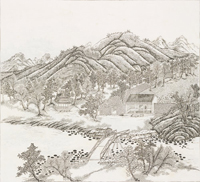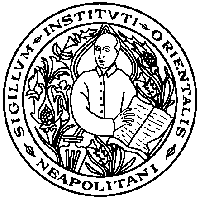 Missionary born in Eboli in 1682. Ordained a priest of Salerno in 1705. During a mission in China, in order to protect his brothers, he adapted to carry out work as a painter and engraver for the court of Beijing. Upon his return to Italy he brought back with him a group of young Chinese and founded for them in Naples the College of the Chinese (1732) which later became the Eastern University Institute. He wrote a Chinese dictionary and was one of the fist to see the importance in mutual linguistic knowledge between East and West for a better understanding of the different cultures.
Missionary born in Eboli in 1682. Ordained a priest of Salerno in 1705. During a mission in China, in order to protect his brothers, he adapted to carry out work as a painter and engraver for the court of Beijing. Upon his return to Italy he brought back with him a group of young Chinese and founded for them in Naples the College of the Chinese (1732) which later became the Eastern University Institute. He wrote a Chinese dictionary and was one of the fist to see the importance in mutual linguistic knowledge between East and West for a better understanding of the different cultures.
 Other than being a talented painter and engraver, he was also a mechanical artist and created perfect clocks for the Imperial Court. However his mission as a religious man was the evangelisation of the lands, which he pursued both in Beijing and back in Naples. The College for the Chinese which he founded in Naples was the first Oriental Institute in Europe and it continued to grow throughout Matteo Ripa’s lifetime, thanks to the help from the popes and it welcomed young people from all over Asia.
Other than being a talented painter and engraver, he was also a mechanical artist and created perfect clocks for the Imperial Court. However his mission as a religious man was the evangelisation of the lands, which he pursued both in Beijing and back in Naples. The College for the Chinese which he founded in Naples was the first Oriental Institute in Europe and it continued to grow throughout Matteo Ripa’s lifetime, thanks to the help from the popes and it welcomed young people from all over Asia.
Later on, in 1869 the italian Government took possession of the College, taking away it’s original purpose of missionary evangelisation. It is now a days the prestigious University Institute of Oriental studies in Naples. Eboli has names a school after Matteo Ripa and a bronze statue of him is present in its garden. There is also a monument built for him in Naples in 1912.



